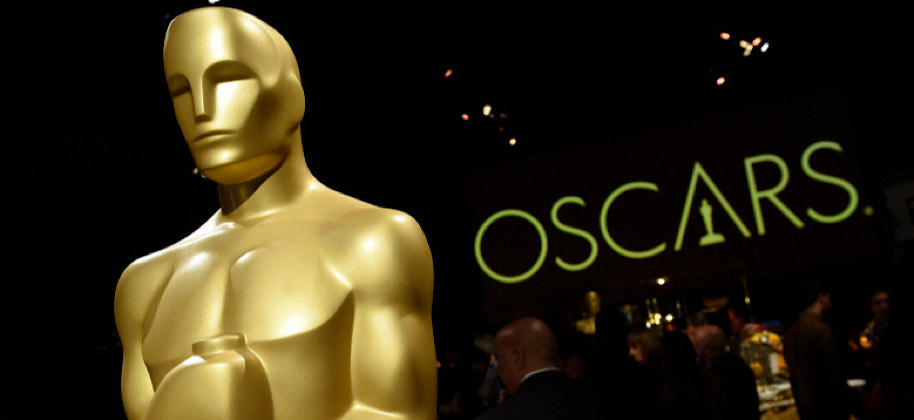Last Updated on July 30, 2021

The Academy is making moves to ensure that inclusion is very much represented at the Oscars and the news comes just shy of the fifth anniversary of the #OscarsSoWhite controversy.
The Academy of Motion Picture Arts and Sciences announced Tuesday that "The aperture must widen to reflect our diverse global population in both the creation of motion pictures and in the audiences who connect with them. The Academy is committed to playing a vital role in helping make this a reality. We believe these inclusion standards will be a catalyst for long-lasting, essential change in our industry.” This change will begin with the 94th and 95th Oscars ceremonies, scheduled for 2022 and 2023. During this time, a film will submit a confidential Academy Inclusion Standards form to be considered for Best Picture. Beginning in 2024, for the 96th Oscars, a film submitting for Best Picture will need to meet the inclusion thresholds by meeting two of the four standards. According to the Academy, these new standards apply only to Best Picture and do not affect other categories, which will stick to their current eligibility requirements. You check out the list of standards below:
STANDARD A: ON-SCREEN REPRESENTATION, THEMES, AND NARRATIVES
To achieve Standard A, the film must meet ONE of the following criteria:
-
A1. Lead or significant supporting actors
At least one of the lead actors or significant supporting actors is from an underrepresented racial or ethnic group.
• Asian
• Hispanic/Latinx
• Black/African American
• Indigenous/Native American/Alaskan Native
• Middle Eastern/North African
• Native Hawaiian or other Pacific Islander
• Other underrepresented race or ethnicity -
A2. General ensemble cast
At least 30% of all actors in secondary and more minor roles are from at least two of the following underrepresented groups:
• Women
• Racial or ethnic group
• LGBTQ+
• People with cognitive or physical disabilities, or who are deaf or hard of hearing -
A3. Main storyline/subject matter
The main storyline(s), theme or narrative of the film is centered on an underrepresented group(s).
• Women
• Racial or ethnic group
• LGBTQ+
• People with cognitive or physical disabilities, or who are deaf or hard of hearing
STANDARD B: CREATIVE LEADERSHIP AND PROJECT TEAM
To achieve Standard B, the film must meet ONE of the criteria below:
- B1. Creative leadership and department heads
At least two of the following creative leadership positions and department heads — Casting Director, Cinematographer, Composer, Costume Designer, Director, Editor, Hairstylist, Makeup Artist, Producer, Production Designer, Set Decorator, Sound, VFX Supervisor, Writer — are from the following underrepresented groups:
• Women
• Racial or ethnic group
• LGBTQ+
• People with cognitive or physical disabilities, or who are deaf or hard of hearing
At least one of those positions must belong to the following underrepresented racial or ethnic group:
• Asian
• Hispanic/Latinx
• Black/African American
• Indigenous/Native American/Alaskan Native
• Middle Eastern/North African
• Native Hawaiian or other Pacific Islander
• Other underrepresented race or ethnicity
-
B2. Other key roles
At least six other crew/team and technical positions (excluding Production Assistants) are from an underrepresented racial or ethnic group. These positions include but are not limited to First AD, Gaffer, Script Supervisor, etc.
-
B3. Overall crew composition
At least 30% of the film’s crew is from the following underrepresented groups:
• Women
• Racial or ethnic group
• LGBTQ+
• People with cognitive or physical disabilities, or who are deaf or hard of hearing
STANDARD C: INDUSTRY ACCESS AND OPPORTUNITIES
To achieve Standard C, the film must meet BOTH criteria below:
-
C1. Paid apprenticeship and internship opportunities
The film’s distribution or financing company has paid apprenticeships or internships that are from the following underrepresented groups and satisfy the criteria below:
• Women
• Racial or ethnic group
• LGBTQ+
• People with cognitive or physical disabilities, or who are deaf or hard of hearingThe major studios/distributors are required to have substantive, ongoing paid apprenticeships/internships inclusive of underrepresented groups (must also include racial or ethnic groups) in most of the following departments: production/development, physical production, post-production, music, VFX, acquisitions, business affairs, distribution, marketing, and publicity.
The mini-major or independent studios/distributors must have a minimum of two apprentices/interns from the above-underrepresented groups (at least one from an underrepresented racial or ethnic group) in at least one of the following departments: production/development, physical production, post-production, music, VFX, acquisitions, business affairs, distribution, marketing and publicity.
-
C2. Training opportunities and skills development (crew)
The film’s production, distribution and/or financing company offers training and/or work opportunities for below-the-line skill development to people from the following underrepresented groups:
• Women
• Racial or ethnic group
• LGBTQ+
• People with cognitive or physical disabilities, or who are deaf or hard of hearing
STANDARD D: AUDIENCE DEVELOPMENT
To achieve Standard D, the film must meet the criterion below:
-
D1. Representation in marketing, publicity, and distribution
The studio and/or film company has multiple in-house senior executives from among the following underrepresented groups (must include individuals from underrepresented racial or ethnic groups) on their marketing, publicity, and/or distribution teams.
• Women
• Racial or ethnic group:
•Asian
•Hispanic/Latinx
•Black/African American
•Indigenous/Native American/Alaskan Native
•Middle Eastern/North African
•Native Hawaiian or other Pacific Islander
•Other underrepresented race or ethnicity
•LGBTQ+
• People with cognitive or physical disabilities, or who are deaf or hard of hearing
This is going to be viewed as a very seismic shift for The Academy and it's bound to be met with celebration because it's long overdue and its fair share of controversy because it feels like it's being forced and like the industry is being ordered to meet the requirements or their films won't be considered for acknowledgment. If you get through the standards they have put in place, it really isn't hard to meet them and one could argue that this much representation and diversity should've been in place a long time ago. Also, variations of these kinds of requirements are already in place at other organizations such as BAFTA.
The fact of the matter is, the Academy has struggled for years to nominate films that are diverse in its cast, directors, and technical craftspeople. This all came to a major head In 2016, after they failed to nominate any person of color among their 20 acting nominees, Cheryl Boone Isaacs, who was Academy President at the time, took historic action by committing to doubling the number of women and diverse members by 2020, which they have achieved. This latest step is just another way to push inclusion and it's something that The Academy has not been silent about doing. They have added more diverse Academy members and have added more women and minorities to be involved in the Academy process. This is definitely their biggest move and I'm curious to see what reaction this will get as the story gains more traction.
As for the other categories, they will keep their current eligibility requirements. For categories such as animated feature, documentary feature, and international feature, that submit for best picture consideration, they will be addressed separately. These new standards also don't affect the current 93rd Oscars eligibility year — which, due to the pandemic, now stretches from January 1, 2020, through February 28, 2021 (the next Oscar show is set for its latest date ever, April 25, 2021).
Do YOU agree with the new standards being put in place by The Academy?




















Follow the JOBLO MOVIE NETWORK
Follow us on YOUTUBE
Follow ARROW IN THE HEAD
Follow AITH on YOUTUBE